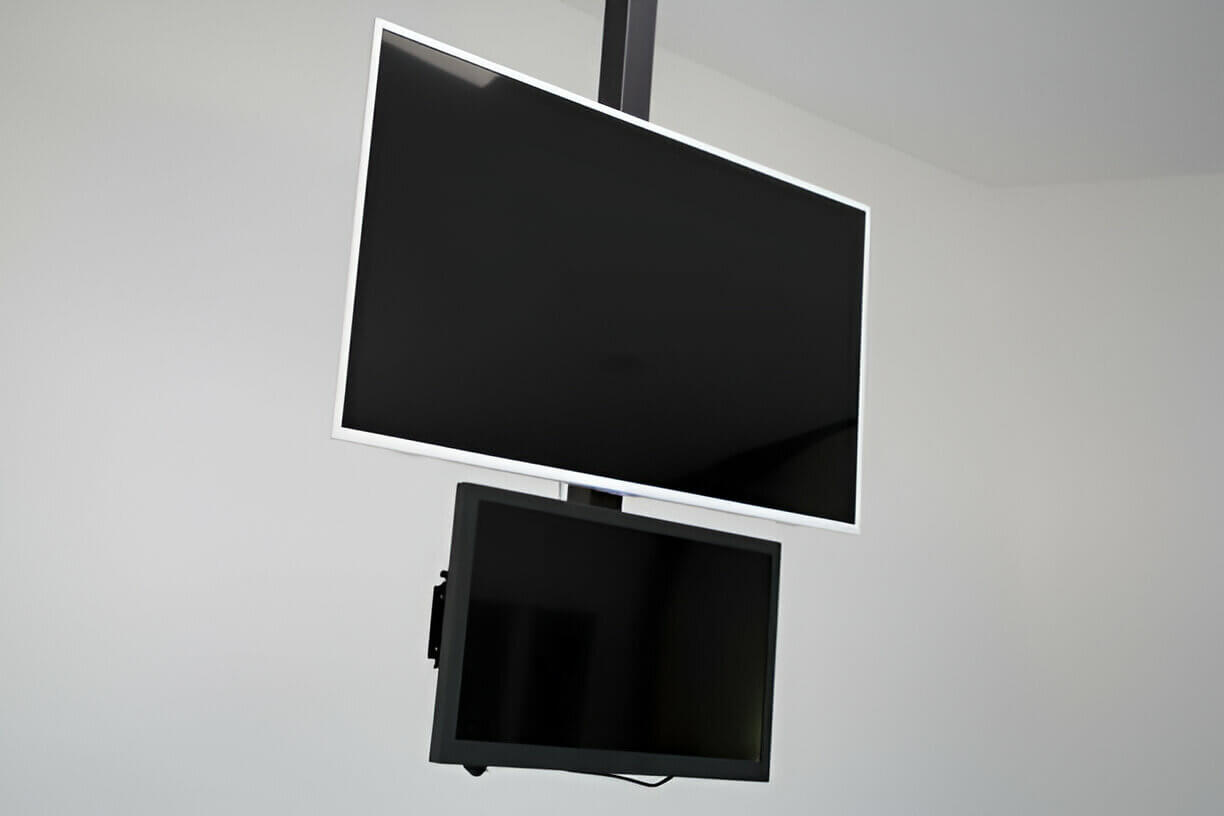Choosing between a TV stand and a wall mount is an important decision that affects both the functionality and aesthetics of your living space. Each option offers distinct benefits and drawbacks, and understanding these can help you create a setup that best suits your lifestyle and home environment.

Benefits of a TV Stand
Additional Storage Space
One of the significant advantages of a TV stand is the extra storage it provides. TV stands often come with shelves, cabinets, and drawers, which are perfect for organizing and storing various electronic devices and accessories.
- Storage Solutions: With a TV stand, you have ample space to store DVD players, gaming consoles, cable boxes, remote controls, and even decorative items. This helps keep your living room tidy and ensures that all your entertainment devices are easily accessible.
Easy Setup and Mobility
TV stands offer simplicity in setup and flexibility in mobility.
- Simple Installation: Setting up a TV stand is straightforward and does not require any drilling or wall modifications. This is ideal for those who prefer an uncomplicated installation process.
- Mobility: TV stands can be easily moved around, allowing you to rearrange your room layout whenever you wish. This flexibility is particularly beneficial if you anticipate moving to a new home or frequently change your room’s design.
Cable Management
Effective cable management is another advantage of using a TV stand.
- Concealed Cables: Many TV stands are designed with features to hide cables, providing a cleaner and more organized look. This minimizes the clutter of visible wires and enhances the overall aesthetics of your space.
Cons of a TV Stand
Despite the benefits, TV stands have some drawbacks that might influence your decision.
- Takes Up Floor Space: TV stands occupy significant floor space, which can make a room feel more cramped, especially in smaller living areas. This can limit the available space for other furniture and reduce the overall spaciousness of the room.
- Limited Customization: TV stands offer fewer customization options regarding height and viewing angle. Once set up, adjusting the TV’s height or angle to suit different viewing preferences is challenging.
Benefits of a Wall Mount
Space-Saving Design
Wall mounts are ideal for maximizing floor space and creating a modern, minimalist look.
- Maximizing Floor Space: By mounting the TV on the wall, you free up floor space, making the room appear larger and more open. This is particularly advantageous in smaller rooms where space is at a premium.
- Safety: Wall-mounted TVs are securely fastened to the wall, reducing the risk of the TV being knocked over by children or pets. This enhances safety and stability in your home.
Customizable Viewing Experience
Wall mounts offer a high degree of customization, enhancing your viewing experience.
- Adjustable Angles: Many wall mounts allow for tilting, swiveling, and rotating, enabling you to adjust the TV to the perfect viewing angle. This customization provides a more comfortable and personalized viewing experience.
- Modern Aesthetic: Wall-mounted TVs offer a sleek, contemporary look, eliminating the need for bulky furniture. This design choice can create a clean and streamlined appearance in your living room.
Cons of a Wall Mount
While wall mounts offer several benefits, they also come with some potential downsides.
- Installation Complexity: Installing a wall mount requires drilling and securing the mount into wall studs, which can be challenging and time-consuming. Proper installation is crucial to ensure the TV is securely mounted and to prevent damage to the wall.
- Permanent Placement: Once installed, wall mounts are relatively permanent. Adjusting the TV’s position or moving it to another room involves considerable effort and potential wall damage.
Factors to Consider
Space
Your room’s size and layout play a significant role in deciding between a TV stand and a wall mount.
- Room Size and Layout: Consider the available wall space and the room’s overall size. Wall mounts are ideal for smaller rooms where floor space is limited, while TV stands are better suited for larger rooms with ample space.
Viewing Preferences
Your viewing habits and preferences should also influence your decision.
- Customization and Comfort: Think about how you typically watch TV. If you prefer a customizable viewing angle and a sleek, modern look, a wall mount may be the better option. If you need additional storage and easy access to cables, a TV stand might be more suitable.
Budget and Maintenance
Cost and maintenance requirements are crucial factors to consider.
- Cost Considerations: TV stands are generally more expensive than wall mounts due to their additional storage features and furniture-like design. Wall mounts are typically more affordable but may require professional installation for the best results.
- Maintenance: TV stands require more maintenance to keep the storage areas organized and dust-free. Wall mounts need less maintenance but may require occasional adjustments to ensure stability.
Conclusion
Choosing between a TV stand and a wall mount depends on your specific needs, room size, and viewing preferences. Both options offer unique benefits and drawbacks. TV stands provide additional storage and easy setup, while wall mounts save space and offer a modern aesthetic with customizable viewing angles.




